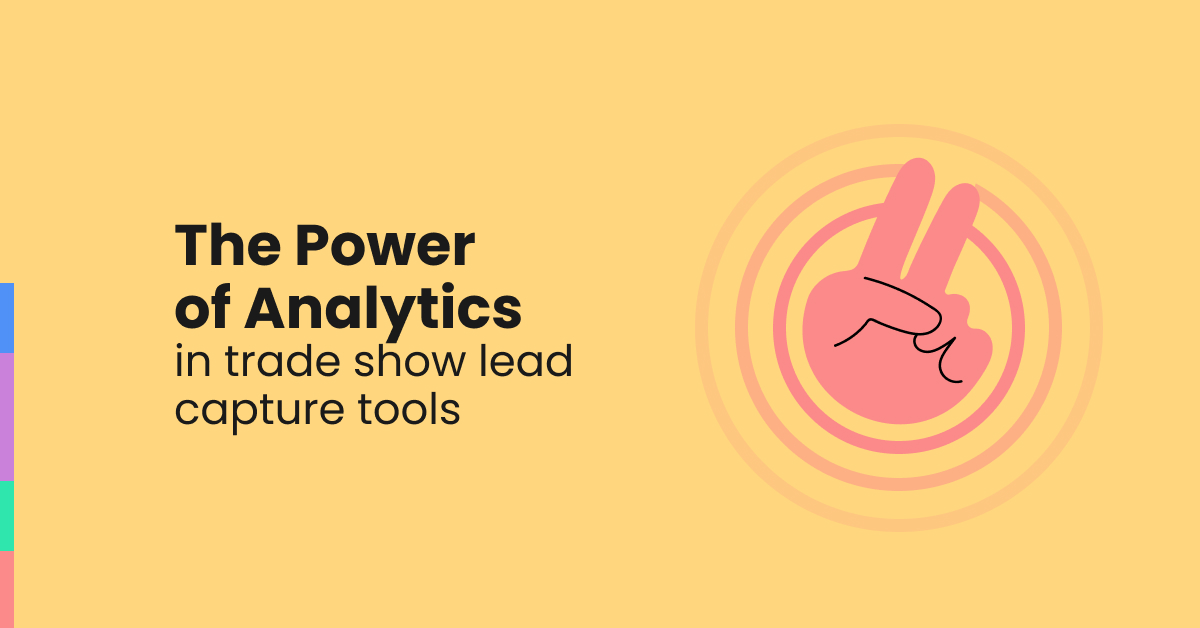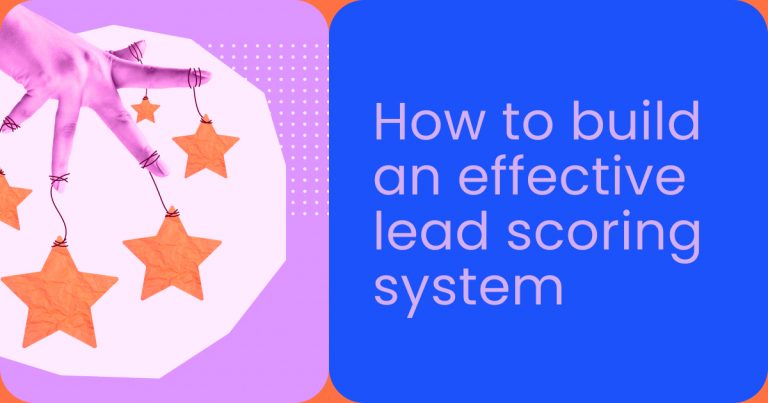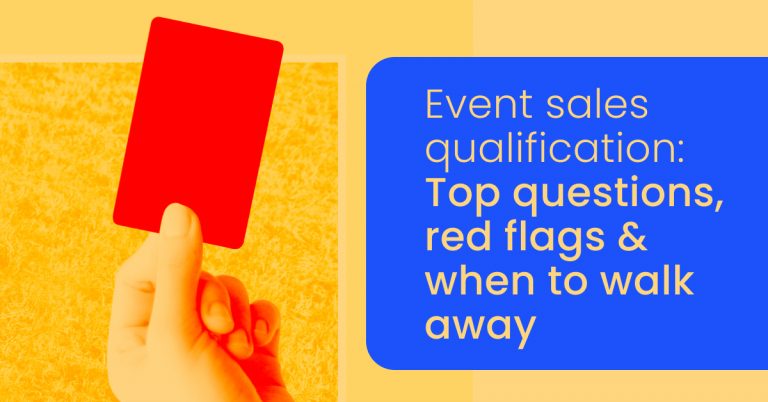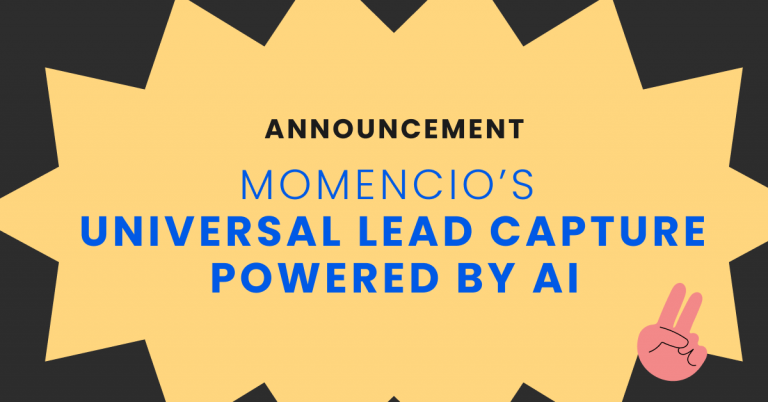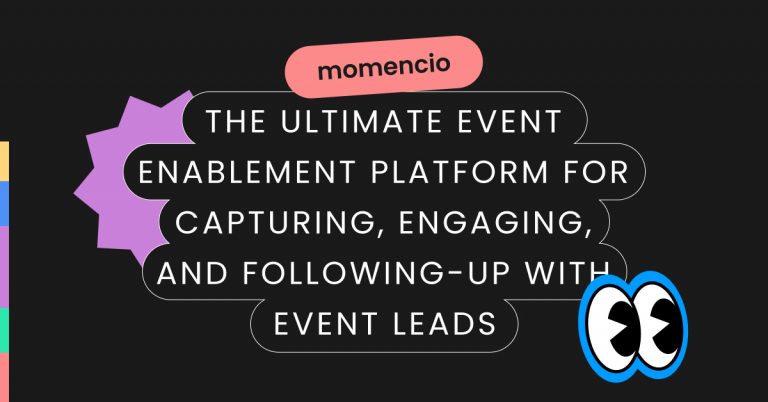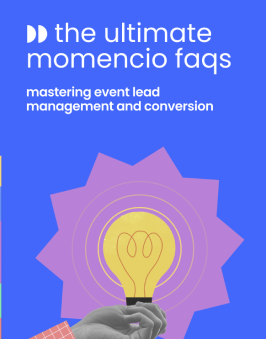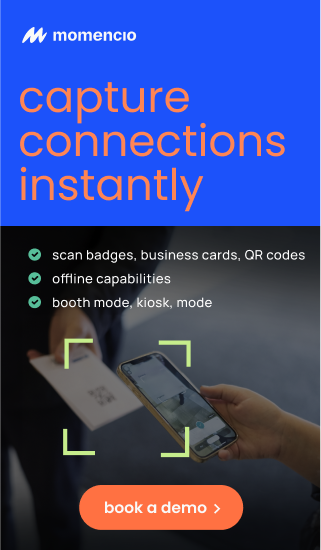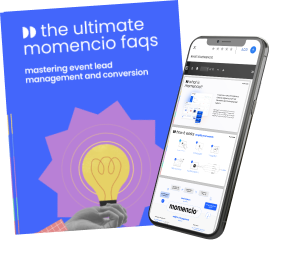The Power of Analytics in Trade Show Lead Capture Tools
In the competitive realm of trade shows, the ability to capture and analyze lead data effectively can significantly alter the outcome of your event strategies. For event planners and field marketers, understanding which analytics are pivotal in lead capture tools not only enhances lead management but also boosts overall event ROI. This introduction delves into the essential analytics provided by lead capture tools and their impact on trade show strategies. It reviews the tools offering the best features for insightful data analysis.
In 2022, a study found that 75% of event marketers believe that event-specific analytics play a crucial role in strategic decision-making (source: Event Tech Industry Report 2022). As trade shows continue to evolve with technology, integrating advanced analytics into your lead capture tools can provide a competitive edge, ensuring that every potential customer interaction is maximized for the best possible outcome.
By examining the most valuable analytics, how they influence future event strategies, and evaluating the top tools that provide these analytics, this article aims to empower event professionals with the knowledge to make informed decisions and achieve tremendous success in their trade show endeavors.
What Analytics Matter Most in Lead Capture Tools?
When evaluating the effectiveness of lead capture tools at trade shows, it’s crucial to focus on the types of analytics that provide actionable insights. These analytics not only help in understanding attendee behavior but also guide strategic decisions for future events. Here, we explore the most significant analytics that event planners and marketers should consider to maximize their ROI.
Visitor Traffic Analysis
Understanding the flow of traffic through your trade show booth is essential. Analytics that track the number of visitors, peak visiting times, and the dwell time at the booth can help you identify which elements are attracting the most attention and which are being overlooked. This data is crucial for optimizing booth layout and staffing schedules to ensure that high-interest areas are well attended to during peak times.
Lead Quality Scoring
Not all leads are created equal. Lead capture tools that include quality scoring based on visitor interactions (such as time spent in the booth, number of engagements, or interest in specific products) can help prioritize follow-up efforts. By scoring leads based on these interactions, sales teams can better focus their efforts on leads that are more likely to convert, thereby increasing the efficiency of post-event sales activities.
Engagement Metrics
Detailed analytics on how attendees interact with displays, presentations, and demos provide deep insights into what captures their interest. For instance, tracking which product demos were most viewed and the average viewing duration can indicate which products are likely to be best-sellers. This type of data is invaluable for refining product offerings and tailoring future marketing materials.
Conversion Tracking
A critical component of trade show analytics is understanding how booth visits translate into actual sales or follow-up actions. Conversion tracking tools measure the effectiveness of lead capture by tracking the visitor’s journey from initial contact to a completed sale or scheduled follow-up. This helps determine the overall success of the event and the ROI of participation.
Sentiment Analysis
Advanced lead capture tools now incorporate sentiment analysis to gauge visitor mood and reactions during interactions with booth staff or presentations. This technology can analyze facial expressions, body language, and verbal interactions to provide a more nuanced view of attendee engagement and satisfaction. Such insights are beneficial for training staff and improving future interactions.
Real-Time Data Access
The ability to access data in real time is a game-changer for dynamic event environments like trade shows. Real-time analytics allow event teams to make on-the-fly adjustments to presentations, staff allocations, and engagement strategies based on current attendee behavior and feedback. This adaptability can significantly enhance the attendee experience and improve lead capture rates.
In summary, the most impactful analytics in trade show lead capture tools are those that provide a comprehensive view of visitor behavior, lead quality, engagement levels, and conversion outcomes. By leveraging these insights, event professionals can not only enhance immediate engagement strategies but also refine their overall event planning and execution for future trade.
Impact of Analytics on Trade Show Strategies
The integration of analytics into trade show lead capture tools significantly influences the strategic planning and outcomes of trade shows. By leveraging detailed data, event professionals can refine their approaches to booth design, attendee engagement, and overall event execution. This section explores how analytics from lead capture tools can reshape trade show strategies to foster better results.
Tailored Booth Experiences
Analytics provide insights into which aspects of a booth attract the most visitor engagement and which perform differently than expected. This data enables event marketers to design their booths more effectively by focusing on high-impact areas that draw attention. For example, suppose analytics reveal that interactive demos drive more engagement than static displays. In that case, future booths can allocate more space and resources to interactive elements, enhancing the visitor experience and potentially increasing lead capture rates.
Optimized Staffing and Training
Data on peak traffic times and visitor engagement levels help in optimizing staff schedules to ensure that the booth is adequately operated during busy periods. Furthermore, understanding the types of questions or interactions that visitors have with staff can also guide targeted training programs. Staff can be trained specifically to handle frequently asked questions or to engage in discussions that are more likely to convert visitors into leads, thus improving the overall efficiency of the trade show team.
Enhanced Follow-up Strategies
Post-event follow-up is critical to converting leads into sales. Analytics from lead capture tools can segment leads based on their actions and interests shown during the event, allowing for more personalized follow-up communications. For instance, sending customized emails that reference a product a visitor showed interest in during the trade show can significantly increase the chances of conversion, compared to a generic thank you email.
Strategic Decision Making
Beyond immediate trade show outcomes, the long-term strategic decisions of an organization can be guided by robust analytics. Understanding the overall trends in visitor behavior and interest across multiple events can help companies decide where to invest in product development or market expansion. Analytics might show a strong interest in a specific service or product line in certain regions, suggesting a potential market focus or a pivot in strategy.
Budget Allocation
Investing in trade show participation involves considerable costs, and maximizing ROI is paramount for businesses. Analytics provide precise data on what works and what doesn’t, helping companies allocate their budgets more effectively. For example, if data shows that certain types of engagement activities or booth setups consistently perform well, budgets can be adjusted to replicate this success at future events.
Continuous Improvement
The cycle of planning, executing, analyzing, and refining is a continuous improvement process from which trade shows greatly benefit. Each event provides a wealth of data that, when analyzed, offers actionable insights not only for immediate adjustments but also for long-term strategic planning. This iterative process ensures that each trade show is more effective than the last, continually enhancing both attendee satisfaction and business outcomes.
In conclusion, the strategic use of analytics in trade show lead capture tools transforms how events are planned, executed, and leveraged for business growth. By understanding and acting on data-driven insights, companies can not only enhance their immediate trade show performance but also align their broader marketing strategies for better engagement and conversion. This approach ensures that trade shows are not just a marketing expense but a pivotal investment in the company’s growth strategy.
Review of Top Lead Capture Tools with Robust Analytics
In the landscape of trade show marketing, selecting the right lead capture tool can dramatically influence the effectiveness of your event strategy. Here, we review some of the top tools in the market that are known for their robust analytics capabilities, helping you make an informed decision for your next trade show.
- momencio
Features: momencio offers an all-encompassing solution for trade show and event lead capture, providing a suite of tools designed to maximize the effectiveness of each interaction from initial engagement to post-event follow-up. Its features include real-time analytics, automated and personalized follow-up communications, integration with CRM systems, and insightful lead-scoring mechanisms. Additionally, momencio employs AI-driven insights to enhance the personalization of interactions, ensuring that communications are tailored to the specific needs and interests of each lead.
Pros:
- Comprehensive Integration: Seamless synchronization with existing CRM and marketing automation platforms, allowing for a holistic view of each lead and ensuring that no opportunities are missed.
- Automated Personalization: Uses advanced algorithms to deliver automated yet highly personalized follow-ups, increasing the likelihood of converting leads into sales.
- Real-Time Analytics: Provides immediate insights into attendee behaviors and preferences, enabling on-the-spot adjustment of strategies and tactics at the trade show.
- Enhanced Lead Scoring: Employs sophisticated models to score leads based on their engagement and potential value, prioritizing follow-up efforts effectively.
Cons:
- Learning Curve: Due to its robust functionalities, new users may experience a learning curve. However, once mastered, momencio can significantly enhance the efficiency and effectiveness of trade show participation.
Unique Selling Proposition (USP): What sets momencio apart is its ability not just to gather leads but to intelligently engage with them at every step of the event-to-sales journey. It turns every interaction into a data-driven opportunity, ensuring that businesses can not only capture but also nurture and convert leads with an unprecedented level of precision.
By focusing on both the capture and conversion of leads, momencio supports businesses in realizing the full potential of their event marketing efforts. It’s an ideal tool for companies looking to enhance their trade show outcomes and achieve a higher ROI through intelligent, data-driven lead management.
Features: Customizable questionnaires and seamless integration with a wide range of CRM systems. Focuses on real-time lead data capture and quality scoring.
Pros: Highly customizable and supports offline data capture.
Cons: Complex setup for custom questionnaires.
Features: Quick scanning capabilities and efficient post-event analytics.
Pros: Quick setup, user-friendly interface.
Cons: Focused more on post-event data aggregation.
Features: AI is used to analyze and score leads, integrating insights with digital marketing campaigns.
Pros: Advanced AI for lead scoring and solid digital marketing integration.
Cons: Higher cost means better for larger companies.
- atEvent
Features: Real-time analytics and interactions tracking, with easy sync with major CRM and marketing automation platforms.
Pros: Excellent for real-time insights and robust CRM integrations.
Cons: Potentially overwhelming feature set for smaller teams.
- Eventdex
Features: Full suite of trade show solutions, including lead retrieval and badge scanning, with comprehensive post-event analysis.
Pros: All-in-one event management and lead capture, robust analytics.
Cons: There is a steep learning curve due to the broad feature set.
Selecting the Right Tool
Choosing the right lead capture tool depends on your specific needs:
- For real-time analytics and engagement tracking, atEvent and Cvent LeadCapture are excellent choices.
- For post-event analysis and lead prioritization, iCapture and Akero offer robust solutions.
- For ease of use and quick setup, Leadature and Eventdex are user-friendly, even for those new to using lead capture tools.
The effectiveness of these tools lies in their ability to provide actionable insights through advanced analytics, which can significantly boost the ROI of your trade show investments. By leveraging these tools, businesses can not only capture leads more effectively but also engage them in a more personalized and impactful manner.
Integrating Analytics into Your Event Technology Stack
Successfully incorporating analytics tools into your existing event technology stack is a critical step for enhancing the effectiveness of your trade show strategies. This integration allows for a more seamless flow of data and ensures that every piece of information captured is effectively used for strategic decision-making. Here’s how to efficiently integrate analytics into your event technology stack.
Step 1: Assess Your Current Technology Landscape
Before integrating a new analytics tool, it’s essential to review your existing event technology stack. Identify what tools you are currently using for event management, CRM, marketing automation, and lead capture. Understanding the functionalities and limitations of your current tools will help you identify where analytics can fill gaps or enhance capabilities.
Step 2: Choose Analytics Tools That Complement Existing Technologies
Select analytics tools that integrate well with your existing technologies. For instance, if you’re using a CRM like Salesforce or HubSpot, ensure that the analytics tool you choose can seamlessly sync with these platforms. This integration ensures that leads captured at the event are automatically updated in your CRM system with all interaction data, facilitating immediate and personalized follow-up actions.
Step 3: Ensure Data Compatibility and Seamless Flow
Data compatibility is crucial for successful integration. Check that the data formats used by your existing tools can be easily transferred to and from the new analytics tool. This might involve setting up APIs or using middleware that can translate data between different formats and systems to ensure a seamless flow of information.
Step 4: Automate Data Collection and Analysis
Automating the data collection and analysis processes can significantly increase efficiency and reduce the chances of errors. Look for features in analytics tools that automate data entry from badge scans; business card captures, and digital interactions at the event. Automation ensures that data is consistently collected and analyzed, providing real-time insights that can be acted upon during the event itself.
Step 5: Train Your Team
Proper training on the new analytics tool is essential for your team to leverage its full potential. Organize training sessions that not only cover how to use the tool but also how to interpret the data it provides. Understanding what the data means in terms of visitor behavior and preferences helps your team make informed decisions on the spot.
Step 6: Test and Refine
Before going live at a significant event, conduct tests to ensure that the integration works as expected. You might start by integrating the tool at smaller, less critical events to see how well it works with your other technologies and processes. Use these opportunities to refine workflows and ensure that data flows correctly between systems without any loss of functionality or information.
Step 7: Monitor and Optimize
Once the analytics tool is integrated and operational, continuously monitor its performance and the insights it generates. Use this data to optimize your event strategies and technology stack over time. Analytics should inform not just how you execute events but also how you plan and strategize for future ones.
By following these steps, you can effectively integrate powerful analytics tools into your event technology stack, thereby enhancing your ability to capture high-quality leads, optimize event execution, and, ultimately, improve ROI. This proactive approach to integration ensures that you are not only collecting data but are also capable of transforming this data into actionable insights that drive business decisions.
Future Trends in Trade Show Analytics Tools
As trade shows continue to evolve, so too do the technologies and analytics tools designed to enhance their impact and effectiveness. Staying ahead of the curve with these tools can provide companies with a significant competitive advantage. Here are some of the emerging trends in trade show analytics tools that are likely to shape the future of event marketing.
Augmented Reality (AR) and Virtual Reality (VR) Integration
The integration of AR and VR technologies into trade show analytics tools is a trend poised for growth. These technologies can enrich the attendee experience by providing immersive product demonstrations and interactive environments. Analytics derived from AR and VR interactions will offer deeper insights into attendee engagement levels and preferences, allowing companies to tailor their presentations and interactions more effectively.
Predictive Analytics
As data collection becomes more sophisticated, the use of predictive analytics in trade show tools is expanding. These systems use historical data and machine learning algorithms to predict future behaviors and trends. For trade shows, this could mean predicting the most qualified leads, the optimal times for product launches, or the most effective follow-up strategies. This proactive approach to analytics will enable marketers to strategize more effectively and maximize the ROI from each event.
Enhanced Real-time Data Processing
The future of trade show analytics lies in the ability to process and act on data in real time. Enhanced real-time analytics will allow exhibitors to adjust their strategies on the fly, tailoring their approach to the dynamics of attendee behavior at the moment. For example, if certain products are getting more attention, additional resources could be dynamically allocated to those areas to maximize engagement.
Integration with IoT Devices
The Internet of Things (IoT) offers exciting possibilities for trade show analytics. Sensors, wearables, and other IoT devices can collect a vast array of data points, from attendee movements around the floor to interactions with exhibits. This data can be analyzed to optimize everything from booth design to staff allocation, creating a more engaging and productive trade show environment.
Advanced Lead Scoring Models
Future analytics tools will likely incorporate more advanced lead-scoring models that use a more comprehensive range of data points to qualify leads. This could include behavioral data, engagement levels, and even emotional reactions captured during interactions. By providing a more nuanced view of potential customers, these tools will help businesses prioritize their efforts and personalize their follow-ups more effectively.
Cross-Event Analytics
Finally, an emerging trend is the development of analytics tools that can synthesize data across multiple events. This cross-event analysis will provide a broader view of trends and patterns, helping companies to understand what strategies work best over time and across different audience segments. This holistic approach to event data will enhance strategic planning and decision-making at the organizational level.
These trends represent just a fraction of the innovations likely to emerge in the field of trade show analytics. As technology continues to advance, the tools available will become even more sophisticated, providing event marketers with unprecedented insights and capabilities to enhance their trade show success.
Conclusion
The strategic use of analytics in trade show lead capture tools has transformed the landscape of event marketing. By leveraging detailed insights from robust analytics, businesses can not only enhance their immediate trade show performance but also align their broader marketing strategies for optimal engagement and conversion. The power of analytics lies in its ability to provide actionable data that informs decision-making optimizes event execution and maximizes return on investment.
From understanding visitor traffic patterns to employing advanced lead scoring models, analytics tools help in crafting personalized attendee experiences and strategic follow-ups that are more likely to convert leads into valuable customer relationships. Moreover, as technology advances, the integration of AR/VR, IoT, and real-time data processing will continue to push the boundaries of what’s possible at trade shows.
As we look towards the future, embracing these analytics tools is not just an option but a necessity for staying competitive in the fast-evolving event landscape. Whether you are an event planner, a field marketer, or a business development executive, the right analytics tools can revolutionize your approach to trade shows.
Take advantage of the opportunity to transform your trade show strategies and achieve unprecedented success. Explore how momencio can integrate with your event technology stack to leverage powerful analytics and drive your trade show success to new heights.
FAQs: Frequently Asked Questions about Analytics in Trade Show Lead Capture Tools
- What are the critical analytics to monitor in trade show lead capture tools?
- Key analytics include visitor traffic analysis, lead quality scoring, engagement metrics, conversion tracking, and real-time data access. These metrics help optimize booth activities and improve follow-up strategies.
- How can analytics from lead capture tools improve trade show ROI?
- Analytics help tailor booth designs, optimize staffing, and refine engagement strategies based on real-time data, leading to higher conversion rates and more effective use of resources.
- What are the benefits of integrating AR/VR technologies into trade show analytics?
- Integrating AR/VR technologies enhances attendee engagement through immersive experiences and provides deeper insights into attendee preferences and behaviors, enabling more personalized follow-ups.
- Why is real-time data important in trade shows?
- Real-time data allows exhibitors to make immediate adjustments to their booth activities and engagement strategies, maximizing the impact of their presence and improving lead capture efficiency.
- How does predictive analytics influence trade show planning?
- Predictive analytics use historical data to forecast attendee behaviors and preferences, helping planners anticipate needs, allocate resources more effectively, and personalize the event experience.
- What should be considered when selecting a trade show analytics tool?
- Consider compatibility with existing event technology, ease of data integration, the range of analytics provided, user-friendliness, and the tool’s ability to process data in real time.
- How can IoT devices enhance trade show analytics?
- IoT devices such as sensors and wearables collect diverse data points like foot traffic and attendee interactions, offering granular insights that help refine event strategies and booth designs.
- What are the challenges of implementing advanced analytics in trade shows?
- Challenges include ensuring data privacy and security, integrating new tools with existing systems without disrupting workflows, and training staff to interpret and act on analytics effectively.
- How do advanced lead scoring models work in analytics tools?
- Advanced lead scoring models assess leads based on multiple criteria such as engagement level, interest shown in products, and potential for conversion, helping prioritize follow-up efforts more efficiently.
- What future trends are expected in trade show analytics?
- Expect to see greater use of AR/VR, more sophisticated predictive analytics, enhanced real-time data processing, increased integration with IoT devices, and a stronger focus on privacy and cross-event analysis.
Interesting Facts from Research
Here are some compelling statistics and findings that highlight the importance and impact of analytics in trade show lead capture tools:
- Event Engagement: According to a recent study, interactive technology at trade shows can increase attendee engagement by up to 44%.
- Lead Conversion: Data shows that using analytics to tailor follow-up communications can improve lead conversion rates by as much as 30% after a trade show.
- ROI Improvement: Organizations that effectively analyze trade show data report a 61% improvement in overall event ROI compared to those that don’t.
- Technology Adoption: Approximately 72% of large enterprises plan to increase their investment in event technology, including analytics, over the next three years.
- Visitor Insights: Analytics tools have helped companies identify a 50% increase in qualified leads by analyzing engagement patterns and visitor traffic flows at trade shows.
- Real-Time Decisions: 80% of marketers believe that real-time marketing is crucial, yet only 43% are able to utilize it fully during trade shows, emphasizing the need for improved real-time analytics tools.
- Predictive Power: Companies using predictive analytics for their events can predict the likelihood of an attendee becoming a customer with over 85% accuracy.
- Tech Integration: The integration of AR and VR with analytics tools has led to a 34% increase in attendee satisfaction at technology-driven trade shows.
- IoT Impact: Events using IoT devices for analytics have seen a 47% increase in operational efficiency during trade shows.
- Privacy Priorities: As of 2024, 90% of businesses using event analytics tools plan to enhance their data security measures in response to increased regulatory and consumer privacy demands.
These statistics underscore the transformative potential of analytics in optimizing trade show strategies and achieving remarkable improvements in lead management and event ROI.
